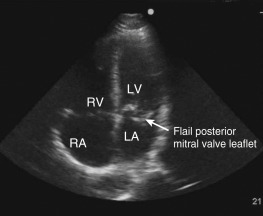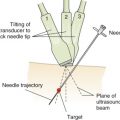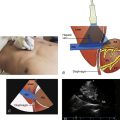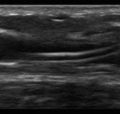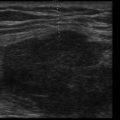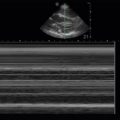Key Points
- •
Basic cardiac valve assessment can be performed with two-dimensional ultrasound and color flow Doppler.
- •
Severe aortic or mitral regurgitation can be detected with bedside ultrasound, which may otherwise be lethal if undetected in patients with acute circulatory or respiratory failure.
- •
A complete valvular assessment requires advanced training and warrants consultation for comprehensive echocardiography.
Background
Screening for significant valvular pathology is an important aspect of point-of-care cardiac ultrasound. In patients presenting with undifferentiated cardiorespiratory failure, an expedited and accurate assessment can be performed at the bedside. Knowledge of atrial and ventricular size and function and preload of the heart are closely intertwined with any valve examination. Conditions in which point-of-care valve assessment can significantly impact patient management include unexplained pulmonary edema, heart failure, septic shock, and ventilator dependence. A point-of-care valve assessment can also help exclude contraindications to extracorporeal circulatory support (e.g., ruling out aortic insufficiency for venoarterial extracorporeal membrane oxygenation [ECMO] or intra-aortic balloon pump counterpulsation).
Guidelines from the American Society of Echocardiography (ASE) and European Association of Echocardiography (EAE) describe in detail the echocardiographic assessment of native valve regurgitation, stenosis, and prosthetic valve dysfunction. However, the expertise, equipment, and time required to perform a detailed valvular assessment is beyond the scope of point-of-care ultrasound applications. For example, a complete assessment of native valve regurgitation integrates multiple quantitative, semiquantitative, and qualitative measures to grade severity. Although an integrated quantitative assessment of the mitral valve is more accurate and reflects long-term outcomes and mortality, such assessments require both time and expertise. Interobserver agreement using quantitative parameters is low, even among experienced echocardiographers. Thus, currently some authors describe the process of accurate quantification of valvular regurgitation as more of an art than a science. Quantitative assessment rarely adds to the acute management of massive regurgitation that is readily apparent by a qualitative assessment.
A document summarizing point-of-care cardiac ultrasound competencies for basic and advanced skill sets in critical care has been published. A focused cardiac valvular assessment primarily uses color flow Doppler to screen for severe aortic or mitral regurgitation (MR). Untreated acute severe valvular regurgitation has an unacceptably high mortality rate. If valvular regurgitation is identified, chronicity is difficult to determine without prior imaging. Because the essence of point-of-care valve assessment is to expeditiously identify abnormalities that may be affecting the patient’s hemodynamics, classifying severity of regurgitation is important. Severe valvular regurgitation begets early action, whether it is consultation for urgent comprehensive echocardiography, mechanical support, or surgery. Thus, it is essential to dichotomously categorize valvular lesions as “severe,” capable of causing or complicating acute illness, versus “non-severe” for all other gradations of valvulopathy. If evaluation for severe vs. non-severe regurgitation is indeterminate in an acutely ill patient, then prompt comprehensive echocardiography is warranted. It is important to note that some severely regurgitant lesions are immutably chronic and may not warrant urgent intervention.
General Considerations
Two-Dimensional Imaging
Integrating findings of a focused valve exam with the clinical context is essential. First, a two-dimensional (2-D) inspection of the valve and its surrounding anatomic scaffolding should be performed in multiple views. If an abnormality is detected, the provider should note the exact location (i.e., leaflet involved), suspected process (e.g., endocarditis, ischemia, dilation), and mechanism of dysfunction (e.g., prolapse, flail, restriction, perforation). Assessment of prosthetic valve function and pathology requires expert level skill in echocardiography.
Calcifications, vegetations, thickening, flail leaflets, and tethering can all be discerned with a 2-D evaluation. A major structural defect should prompt the provider to consider the possibility of a “severe” or culpable lesion. Infective endocarditis cannot be ruled out with point-of-care cardiac ultrasound considering that comprehensive, full-platform echocardiography is falsely negative in 15% of patients. Vegetations typically arise on the lower-pressure side of a valve and may be detected if destructive or large.
Finally, it is imperative to recognize adaptive responses of cardiac chambers to valvular abnormalities. Assessing atrial and ventricular size can help determine severity, as well as chronicity. The left ventricle (LV) and left atrium (LA) are often not dilated with acute left-sided valvular regurgitation. However, differentiating acute vs. acute on chronic regurgitation is challenging and requires advanced echocardiography skills and review of previous echocardiograms.
Scope of Examination
Compared with other domains of point-of-care cardiac ultrasound (e.g., right ventricle, left ventricle, inferior vena cava, pericardium), valvular assessment is particularly limited compared with comprehensive echocardiography. A point-of-care exam is goal directed to identify mitral or aortic regurgitation (AR) that, if undetected and unmanaged, may lead to critical illness or death. Severe acute AR from aortic dissection, endocarditis, or trauma, and severe acute MR from ischemia or endocarditis must be recognized in a timely fashion. Tricuspid regurgitation (TR) is also readily identifiable and may support underlying diagnoses, such as pulmonary hypertension or endocarditis.
Valvular stenosis may be suspected based on 2-D assessment of valves but requires more expertise to accurately identify and is a less time-sensitive diagnosis in general. Characterization of stenotic valves relies on spectral Doppler and is therefore considered a skill more suitable for advanced echocardiographers.
Color Flow Doppler
Color flow Doppler is the pillar of rapid valve assessment to identify valvular regurgitation. Even though color flow Doppler is featured on the majority of ultrasound machines, providers must be aware of important considerations and common pitfalls when using this mode. Understanding key concepts, such as pulse repetition frequency, Nyquist limit, and aliasing, are requisite starting points before using color flow Doppler ( Figure 16.1 and Table 16.1 ; see also Chapter 2 ).
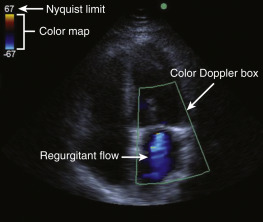
| Term | Definition |
|---|---|
| Pulse repetition frequency (PRF) | The PRF (pulses per second) is how frequently the transducer sends and receives a signal and is determined by flow velocity and interrogation depth. If a second pulse is sent before the first is received, the transducer cannot discriminate between the reflected signal from both pulses and ambiguity (aliasing) occurs. |
| Nyquist limit | Nyquist limit is the upper limit velocity of blood flow that the machine can accurately display with color flow Doppler before aliasing occurs and is the PRF divided by 2. |
| Aliasing | When the velocity of blood flow exceeds the Nyquist limit, the machine is unable to accurately display the direction or speed of blood flow. |
| Color map | A color map defines color assignment to the direction of flow and corresponding velocities. Typical convention is blue for blood flow away from the transducer and red for blood flow toward the transducer. Velocities are encoded by the hues of blue or red; brighter hues signify faster velocities, while duller hues signify slower velocities. |
The following recommendations can help optimize the performance and accuracy when assessing regurgitation with color flow Doppler :
- ▪
Minimize imaging depth
- ▪
Narrow image sector size
- ▪
Set color gain appropriately
- ▪
Align the imaging plane to be parallel with blood flow
- ▪
Set the Nyquist limit to 40–70 cm/s
- ▪
Use the smallest color box that reasonably includes the valve and receiving chamber of interest
Color flow Doppler identifies regurgitant flow and assesses severity based on size of the color jet. An additional parameter that can help grade severity of regurgitation is measurement of vena contracta width (VCW) of the color flow Doppler jet. The VCW is the narrowest diameter of the regurgitant color flow Doppler jet and reflects the effective regurgitant orifice area (EROA). The VCW is measured perpendicular to the color flow jet in the neck between the proximal flow convergence (PFC) and distal jet expansion ( Figure 16.2 ). It is a measurement largely independent of driving pressures and flow rates for fixed orifices ; however, its accuracy with multiple jets is uncertain.
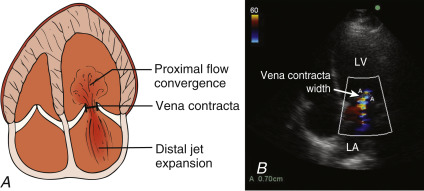
Even when used optimally with full understanding of the physics of this modality, color flow Doppler has diagnostic limitations and does not always correlate with severity of regurgitation. Despite limitations, due to its simplicity and ease of use, color flow Doppler remains the primary tool for point-of-care assessment of valvular regurgitation.
Spectral Doppler
Spectral Doppler, including pulsed-wave and continuous-wave Doppler, offers a more quantitative, sophisticated, but time-consuming approach to valvular and hemodynamic assessment. Applying these techniques at the point of care is feasible but requires significant additional training. Parameters, such as flow reversals, antegrade flow density and velocity, pressure half-time (PHT), and deceleration time (DT), are all spectral Doppler-derived parameters that assist in grading valve lesion severity. These parameters are not discussed in this chapter.
Pathologic Findings
Mitral Regurgitation
Mitral regurgitation (MR) is back flow of blood into the left atrium due to incomplete closure of the mitral valve leaflets during systole. The degree of regurgitation is primarily affected by the regurgitant orifice area but is also influenced by the duration of systole and LA–LV pressure gradient. MR can be due to organic causes (primary or intrinsic valve disease) or functional (secondary) causes.
Jet direction can provide clues to the pathology and etiology of MR. An eccentric jet ( Figure 16.3 ) toward the affected leaflet can be seen with focal LV dysfunction and with rheumatic heart disease, unless both leaflets are affected equally. Centrally directed jets are seen with global LV dysfunction or functional MR ( Figure 16.1 ). Myxomatous degeneration can have an eccentric jet away from the lesion. Endocarditis can have multiple jets in unpredictable directions.
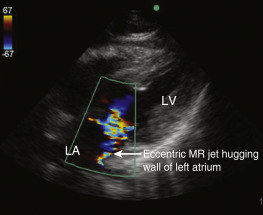
Two-Dimensional Findings
Two-dimensional assessment of the mitral valve is best conducted from both the parasternal long-axis (PLAX) and apical 4-chamber views. A 2-D visual inspection should focus on the presence or absence of vegetations, calcification, perforation, prolapsed or flail leaflets ( Figure 16.4 ), tenting leaflet with coaptation defect (functional MR), and systolic anterior motion (SAM) of the mitral valve.

